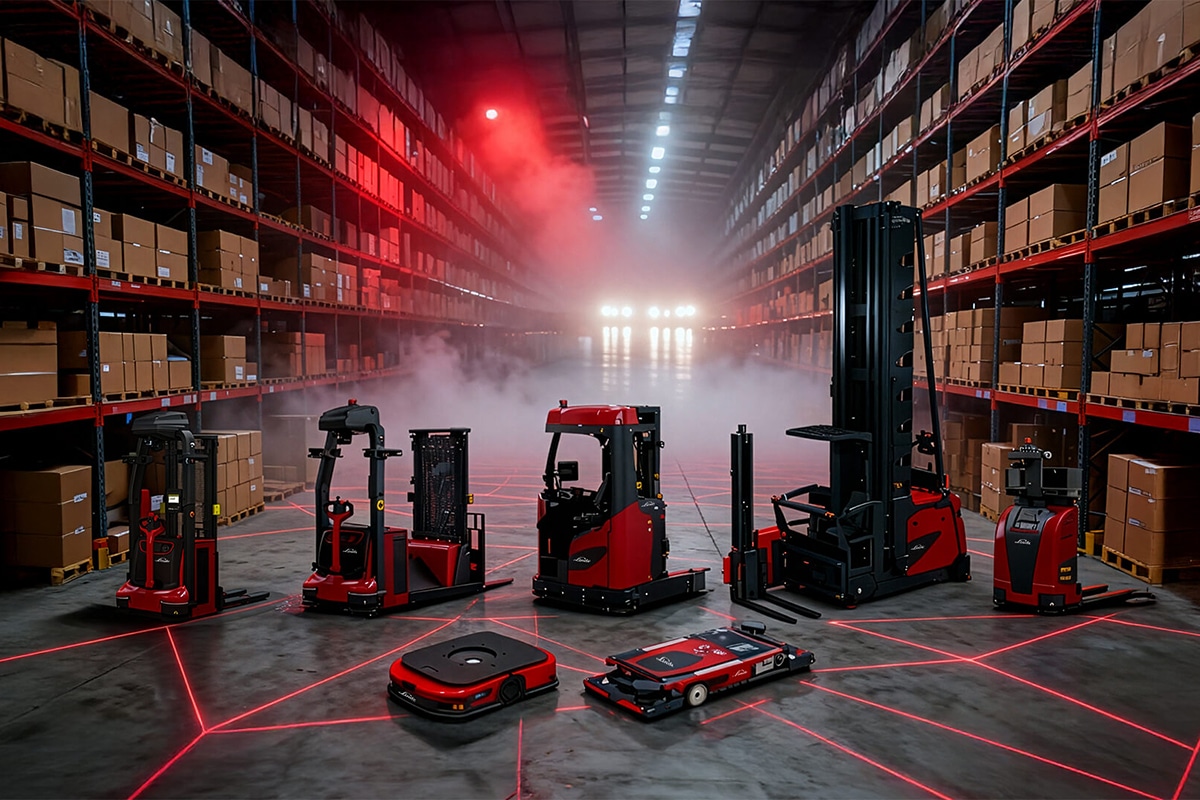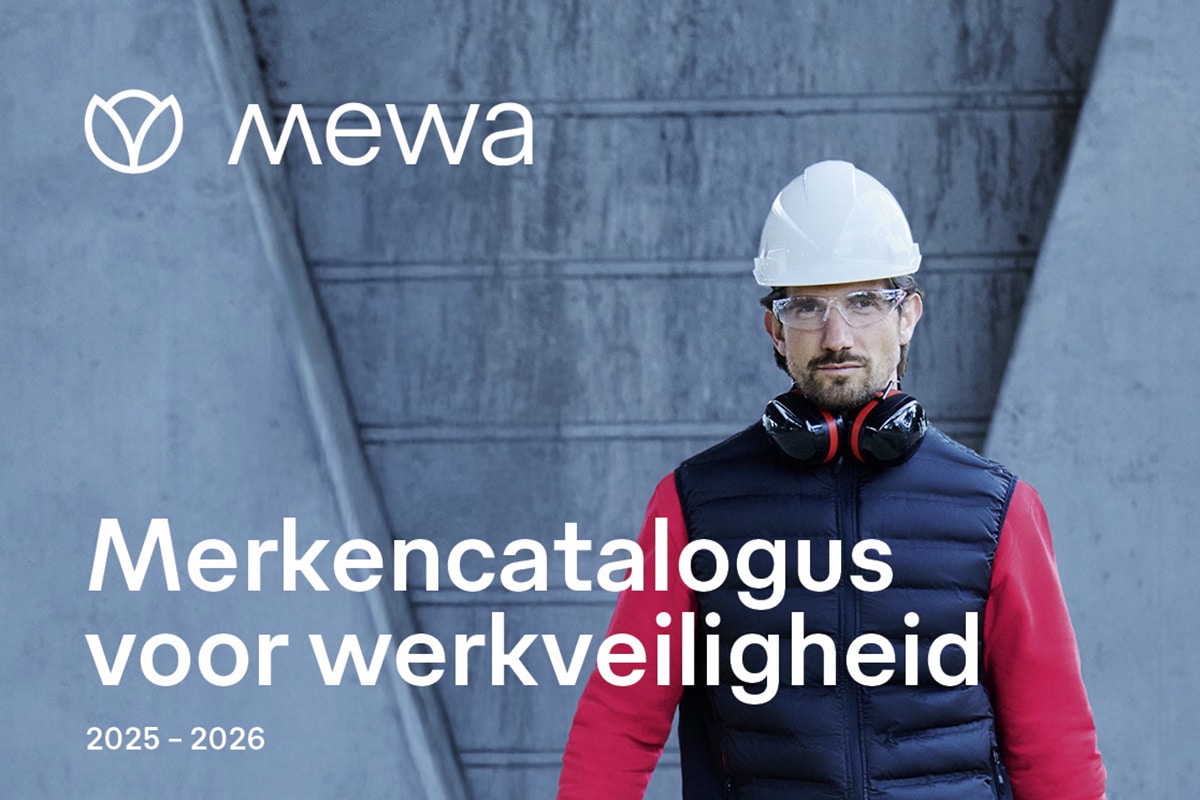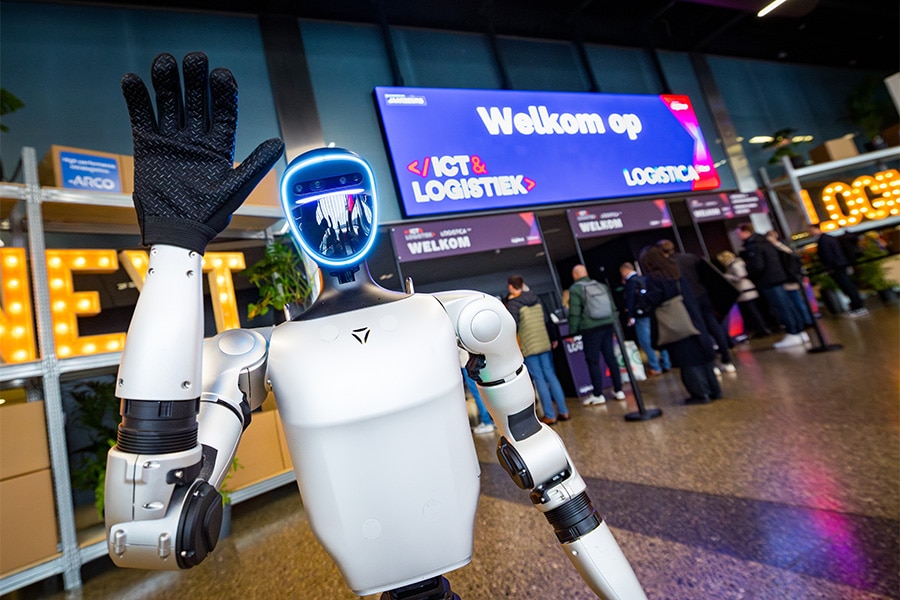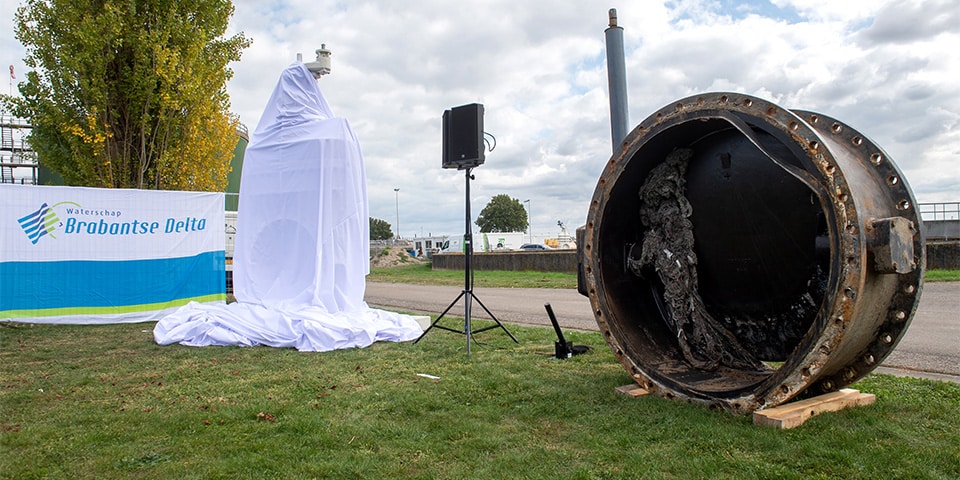
Robust and sustainable into the future
The wastewater pressure pipeline (AWP) in West Brabant is now nearly fifty years old and the associated pressure stations are proving insufficiently reliable. Pumps are reaching the end of their service life and are no longer able to cope with the increased demand. Emergency pump installations are now in permanent use. Reason enough for the Brabantse Delta Water Board to renovate and renew the wastewater discharge pipeline to guarantee capacity and continuity for the next fifty years.
The AWP collects household and business wastewater from 35 villages and towns in West Brabant. All of this wastewater is treated in Bath and then returned to nature via the Westerschelde River. "The pipeline system is 60 kilometers long and was built at the time with a certain reserve," says Frank van Zijl of Brabantse Delta Water Board. "When working on the system, we used to be able to turn off one of the two pumps at the pressure stations in Roosendaal and Bergen op Zoom with ease. That hasn't been possible for years. In recent years an emergency pump installation has been in permanent use and maintenance work on the installation is running into quite a bit of paperwork."
Two assignments
To make the AWP robust again for the future, the water board issued the call for tenders in 2017 for the large-scale renovation and renewal of the existing plant. "We cut the contract into two pieces," says Van Zijl. "After extensive research in 2013, we found that the piping system is still in fine condition. However, it does need to be locally expanded to meet the higher capacity. Part of the work therefore includes the laying of a second pipeline over a 3.5-kilometer stretch to handle larger volumes of wastewater. This order is being carried out by GW Leidingtechniek. Renovating and renewing the two pressure stations and the effluent pumping station at the sewage treatment plant in Bath constitutes the other assignment. A complex assignment under the name AWP 2.0. In fact, everything that hangs on a thread will be replaced," says Van Zijl.
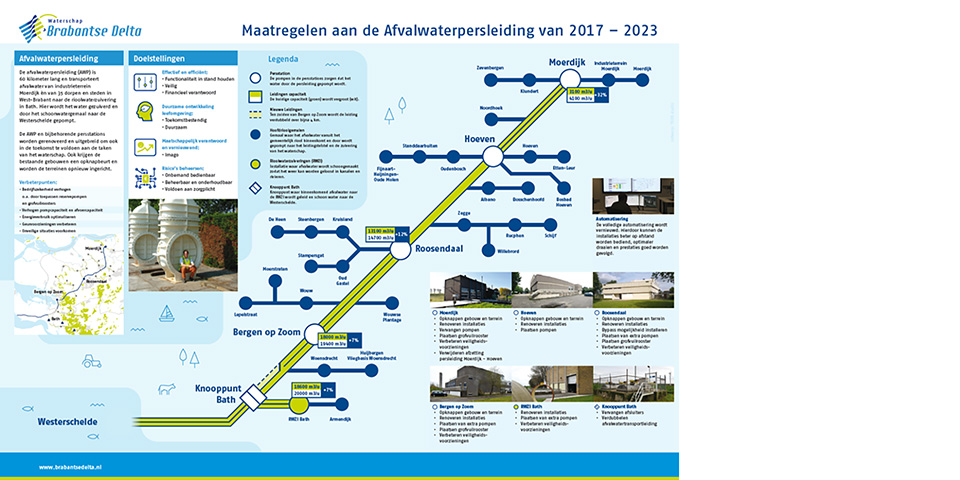
Pathway overview
EMVI pledge
In the call for tenders phase for AWP 2.0, five combinations applied. Van Zijl: "Of these, two combinations eventually submitted an offer. We chose PAUW (GMB WK&I, Van der Kamp, Pentair Nijhuis, Hoppenbrouwers and RHDHV) because of the best quality: a combination of optimal risk management and price. PAUW assures us that the continuity of the AWP is guaranteed at all times. During the construction phase there is always a pump on standby to seamlessly take over capacity in case of problems. An EMVI promise that we appreciate and which, among other things, led to the winning tender. For us as a water board, it is important that we reach the end of the construction process for the most economically attractive price without risk. That means maintaining functionalities 'along the way' and guaranteeing safe processes (a safe working environment for our colleagues, but also for subcontractors) to achieve an operable, manageable and maintainable result."
The renovated and updated AWP will soon pump wastewater in the most sustainable way possible, according to Van Zijl using gravity as much as possible in the press stations. "The design incorporates many smart techniques. We are also making huge strides in terms of process automation with real-time visibility on all installations and smart control software. To improve the
to further ensure operational reliability, we have entered into a maintenance contract with performance guarantee for 15 years, under which the pumps are not allowed to perform their function for a maximum of 20 hours per year. This gives us the guarantee of
a robust and reliable system for the future."

